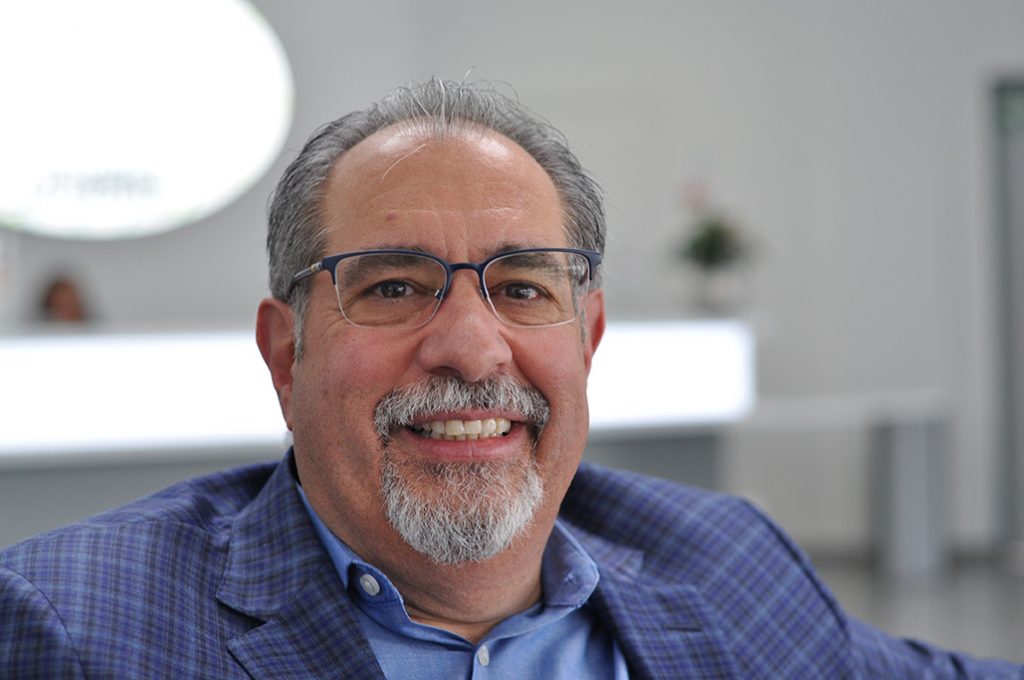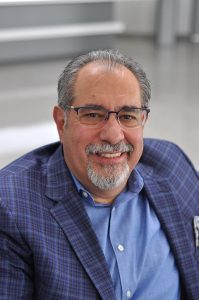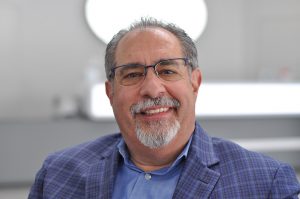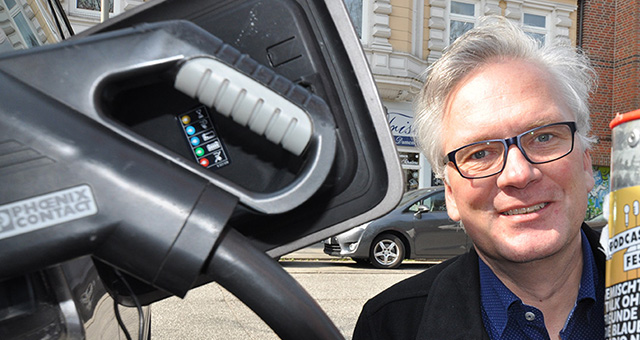America has always been a land of contrasts. Where is the motherland of automotive mass production heading? With Vince Carioti, Phoenix Contact has an absolute insider in its ranks. And we have an ideal interview partner.

As Director E-Mobility North America, Vince Carioti is very close to the pulse of the American automotive industry. And even a prime example of the “American Way of Drive”: The 60-year-old manager passionately drives German sports cars with a Bavarian flair, but also strolls the highway in a Hemi-V8 old style.
UPDATE: Hello Vince, tell us about your professional experience and what your tasks are at Phoenix Contact.
I have been working at Phoenix Contact for 22 years. I am an engineer by trade, but have been working on subjects such as electrical design, software, and even hardware for a long time. Over the course of my professional life, however, my tasks have become oriented more towards management and business development. At Phoenix Contact, I am currently responsible for the development and establishment of our e-mobility solutions in the North American market, that is to say Canada, United States, and Mexico.
UPDATE: You come from the country of the big block, V8, muscle cars, pick-ups, and cheap gas. However, at the same time Tesla is showing the rest of the world what the possibilities of e-mobility are. How does e-mobility fit into the American way of life?

First of all, I have to say that it was indeed the entrepreneur Elon Musk who was the first to seriously confront us with the subject of e-mobility in North America, by a long shot. He continues to dominate the market with Tesla. The Model 3 is the best-selling electric car in the USA.
There are distinct differences in terms of mobility. Naturally, the people on the West Coast are further ahead than those in the Midwest. But the large car makers are investing significant resources into driving this subject forward.
However, there is still a lot of catching up to do, especially in terms of infrastructure, i.e. charging. Between 80 and 90 percent of all vehicles are charged at home or during work, rather than at public facilities.
In fact, just one German manufacturer is spending billions on developing the infrastructure, in particular in the field of DC charging technology. This is not, however, entirely voluntary, but a part of the penalty imposed due to the diesel scandal. Of course, we still think big. But having said that, a fully electric version of the best-selling vehicle in the USA, the F150 Pickup, will be launched soon (smiling to himself).
Charging times, infrastructure, and a limited choice of vehicles – this alternative drive technology still has a way to go. All of this will change in 2020, though. All of the big manufacturers have announced new models for next year.
UPDATE: In Europe, and above all in Germany, the car must be able to do everything as the number 1 choice of transport: the trip to the supermarket, the drive to work, but also the business trip and the road trip vacation across Europe.
The USA is an enormous country. Two heavily populated coasts, with huge swathes of open land between. How do average Americans travel from place to place? What modes of transport does they use? Are airplanes or trains an alternative?
The car is also the number 1 means of mobility in the USA. Think about how expensive it is when a family with two or three children have to travel. In this case, the car is by far the best value. And our public transport system, our infrastructure, is abysmal, both bus and rail. This usually leaves the car as the only option.
But even here, we are seeing the beginnings of a paradigm shift. Younger people today are increasingly turning to Uber or car sharing models – the car is losing its significance. This in turn is changing usage behavior.
Incidentally, we are also working on the electrification of heavy and light commercial vehicles. That is an enormous market – both here in the USA and globally.
UPDATE: Phoenix Contact E-Mobility in Germany and Phoenix Contact E-Mobility USA – what challenges are facing both companies?

The development of this technology is clearly controlled and initiated here from Germany. As an autonomous e-mobility division, we have only been present in the USA for two years so we have not been active in the US market for very long.
We do not work with our own developers in the USA. The Schieder facility in Germany works on development. Of course, we define our country-specific requirements here, and then our German colleagues implement these requirements.
Looking to the medium-term, we need our own development and production in the US because our market is huge. But this, of course, is only my personal assessment.
UPDATE: Hybrid or fully electric cars – which technologies are currently leading the way in the USA?
Personally, my tendency is towards fully electric cars. And Tesla is very clearly setting the standard. Naturally, there are also proponents of hybrid technologies, in particular due to the issue of limited range. But for me, this is merely a bridging technology.
Incidentally, traditional engine construction is also currently undergoing a huge change in the USA. None of the large manufacturers are investing in the development and production of new gas or diesel power train systems any more.
UPDATE: What kind of car do you drive yourself?
A BMW M3. But we also have a 5.7 liter big block Chevy in the garage. For me personally, the ranges are not really ideal yet. If ranges of 300 miles were possible, and if manufacturers such as Mercedes, Audi, and BMW are involved, then it would be really exciting for me.


